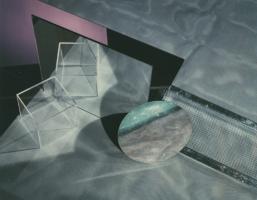
Barbara Kasten - Construct III-D, 1980
The history of photography is intertwined, conceptually, with that of painting. Both mediums evolved from conventional two-dimensional representation to explore ever richer realms of realism, perspective, and abstraction, and both mediums found a strong and enduring mode of expression in the concept of the still life.
Indeed, the power of the paintbrush and of the camera to render as well as to explode the visual reality of the world's common objects is part of the inherent pleasure of image making. In painting, the still life has reached various apotheoses--for example, in the Dutch masterworks of the 17th and 18th centuries, the tromp l'oeil experiments of the 19th, and the Cubist fragmentations of the 20th. In photography, the still life has inhabited a more fluid continuum of visual expression, encompassing modes from stark, clinical realism to sheer abstraction--but in both painting and photography, the goal has been similar: to help us see the everyday with uncommon vision.
The photos in this exhibition do exactly that, and though they are all 20th-century examples, even the most recent efforts have a tendency to connect with the Pictorialism of a much earlier photographic era. Thus, a photo of a bowl of apples taken late in the last century may well evoke the pears and apples painted by Cézanne late in the previous one. And a floral still life captured by the Autochrome color process pioneered early in the 20th century by the Brothers Lumiere evokes the teemingly detailed canvases of Old Masters.
Fruit, flowers, bowls, glassware and the like may be the mainstays of this exhibit, but they are often captured in fresh or downright experimental modes to importantly differentiate photography's essential modernism from painting's grounding in the pre-modern world. This modernism informs the canny, decisive space in which still life photography plays out. Fragments of wine bottles arrayed against fragments of printed paper, for example, suggest the contemporary marriage of intellectualism and sensuality in art. And the metaphoric representation of eggs in still-life photos (suggesting birth, or the cycle and fragility of life) is matched by the rich tonal and textural contexts in which such objects can be freshly viewed.
At the same time, the glittering kitsch of a Christmas tree ornament can easily fill a frame on its own culturally evocative terms, just at the bones and horns of wild animals can convey intimations of mortality as potently as any Biblical painting. And yet there are objects that would never have been painted even had they existed in the Old World--pure artifacts of industrialism such as paper clips or saw blades--that become ideal formal studies for modernist photographic visionaries such as Brassai or Antonin Gribovski.
If anything, this exhibit reveals the durability and quiet drama of the still-life mode, in which the irony of employing a motion-freezing medium to capture motionlessness is at once raised and defeated. In the hands of these 20th-century masters, the still life goes a long way in affirming photography's power to activate and energize the objects of its attention--just as the Old Masters were able to make us see what was right before our eyes like we had never seen it before.
Exhibited and Sold By
Contemporary Works / Vintage Works, Ltd.
258 Inverness Circle
Chalfont, Pennsylvania 18914 USA
Contact Alex Novak and Marthe Smith
Email info@vintageworks.net
Phone +1-215-518-6962
Call for an Appointment



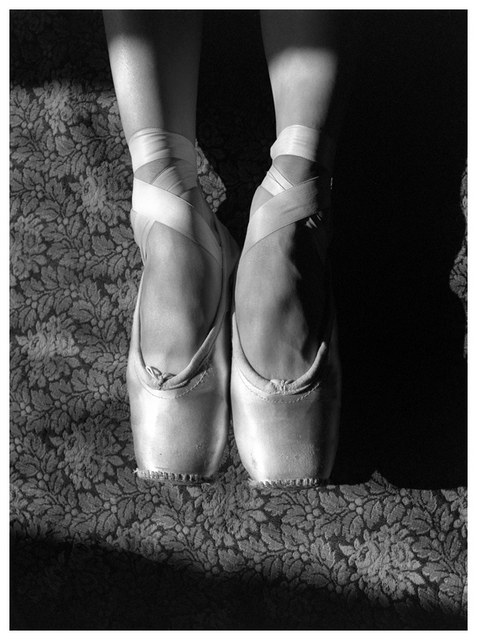



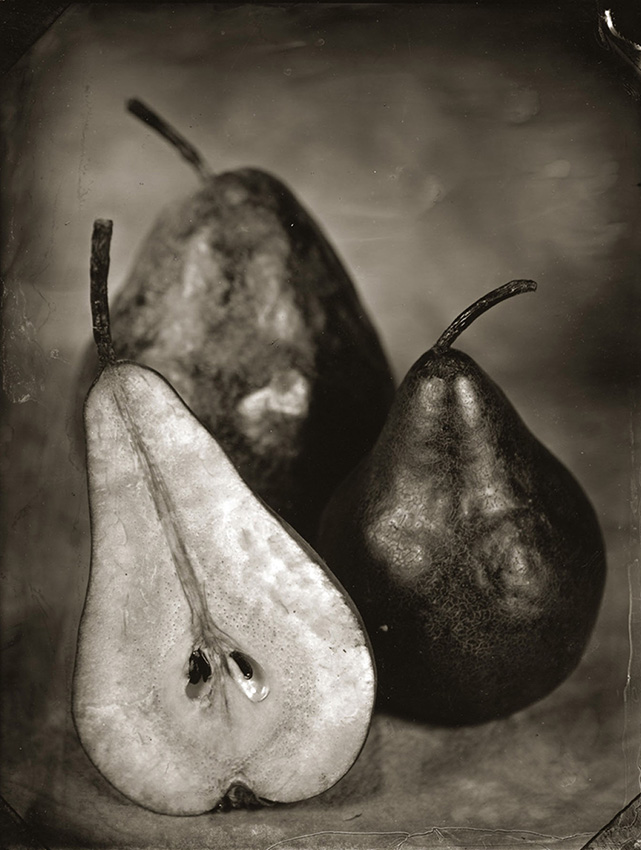

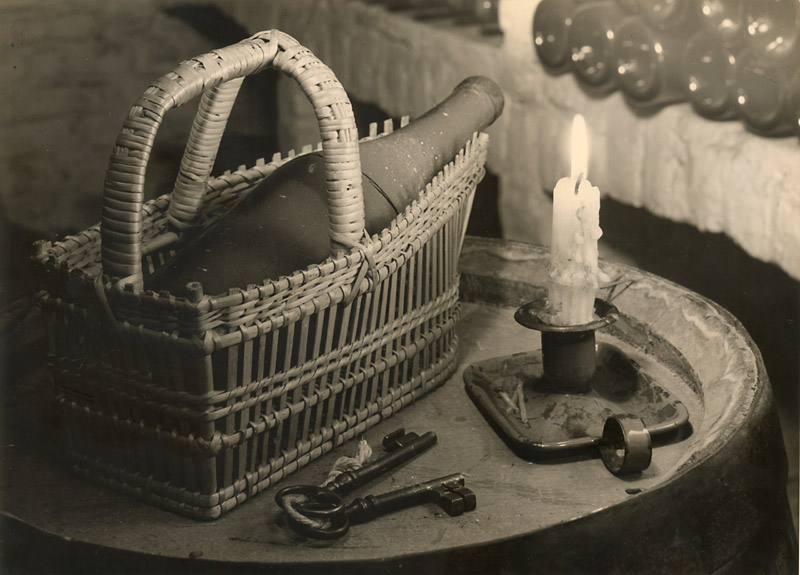
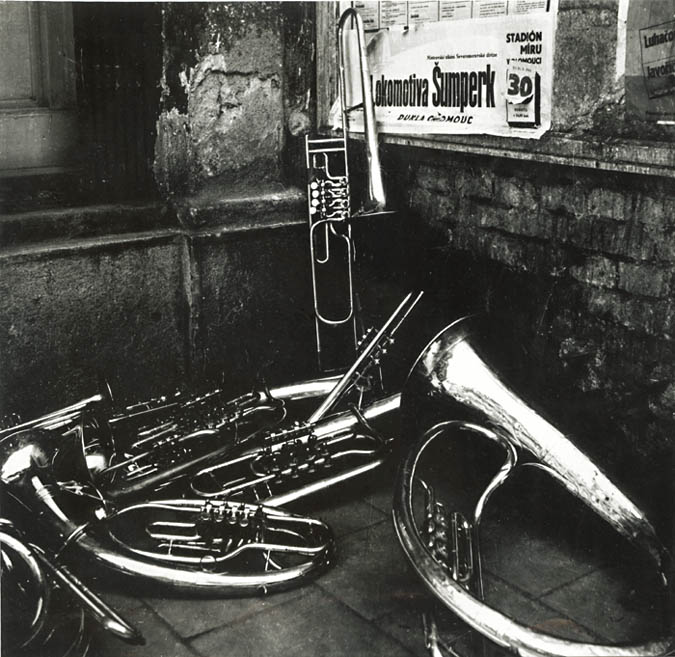


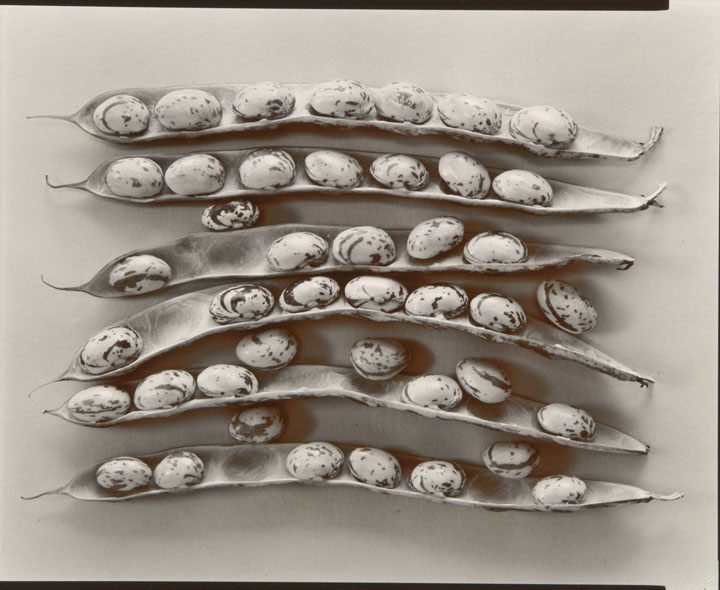
Share This